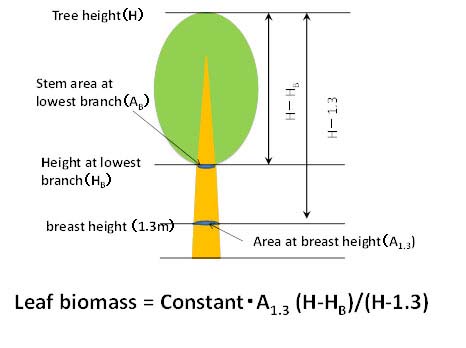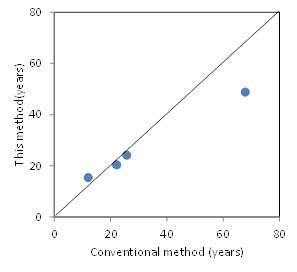Home > Research > Research Results > Research Results 2019 > Newly developed method for accurately estimating foliage biomass after tree thinning
Update:July 1, 2019
Main content starts here.
Newly developed method for accurately estimating foliage biomass after tree thinning
| Article title |
Changes in crown foliage biomass following thinning in an artificial plantation in Kochi |
|---|---|
| Author (affiliation) |
Yoshiyuki Inagaki (a), Fukata Hidehisa (b), Kyotaro Noguchi (c), Kuramoto Shigeo (d), Asami Nakanishi (e) (a) Shikoku Research Center, FFPRI, Kochi, Japan. (b) Kochi Prefectural Forestry Technology Research Center, Kami, kochi, Japan. (c) Tohoku Research Center, FFPRI, Morioka, Iwate, Japan. (d) Department of Forest Vegetation, FFPRI, Tsukuba, Ibaraki, Japan. (e) Field Science Education and Research Center, Kyoto University, Kyoto, Japan. |
| Publication Journal |
Applied forest science, Japan, Vol.27, 1-9, February. 2018, THE SOCIETY OF APPLIED FOREST SCIENCE |
| Content introduction |
Artificial plantations of Japanese cypress and cedar trees usually achieve a full-grown state lush with leaves in 20–30 years (canopy closure). To facilitate the production of good-quality lumber, forestry operators perform thinning after canopy closure. Thinning allows sunlight to reach lower leaves, thereby increasing the foliage biomass of the remaining trees and promoting the auxetic growth of trunks. Accordingly, to evaluate the effects of thinning, it is essential to accurately estimate the changes in the crown foliage biomass following thinning. In this study, we developed a method to determine these changes in artificial plantations of Japanese cypress trees. When the canopy is closed, a numerical formula is used to estimate foliage biomass based on the trunk diameter at 1.3 m above ground and tree height (allometry equation). However, we were unable to accurately estimate the changes in the foliage biomass associated with thinning by this formula. In response, we developed a novel equation for estimating foliage biomass based on the trunk diameter at 1.3 m above ground, tree height, height at crown base, and average temperature. Height at crown base refers to the height of the lowest live branch within the crown. In an artificial plantation in Kochi, the changes in the foliage biomass and relative luminance predicted using this formula were reasonably corresponding to the actual recorded changes at 5 years after thinning and the changes predicted by an existing model.This result demonstrates the effectiveness of this formula. The use of this formula enables a theoretical analysis of the correlation between the intensity of thinning and the auxetic growth of trunks, thereby contributing to the development of thinning techniques for efficient lumber production.
Figure1. Novel allometry equation for estimating foliage biomass considering crown length By measuring tree height, height at crown base, and diameter at breast height, foliage biomass can be estimated using this formula. The constant of proportionality is predicted using the mean temperature of the study site.
Figure2. Number of years needed for foliage recovery after thinning in a Japanese cypress plantation as estimated by two different methods Each point represents a different forest stand. The new model can estimate foliage biomass more easily than the conventional model. |
Copyright © Forest Research and Management Organization. All rights reserved.


